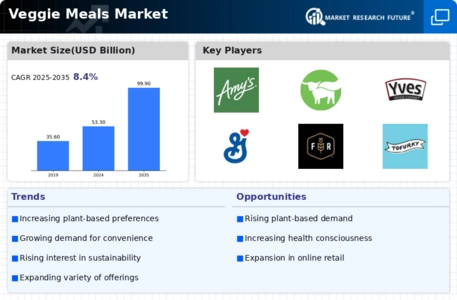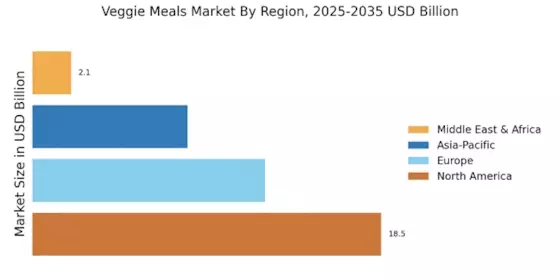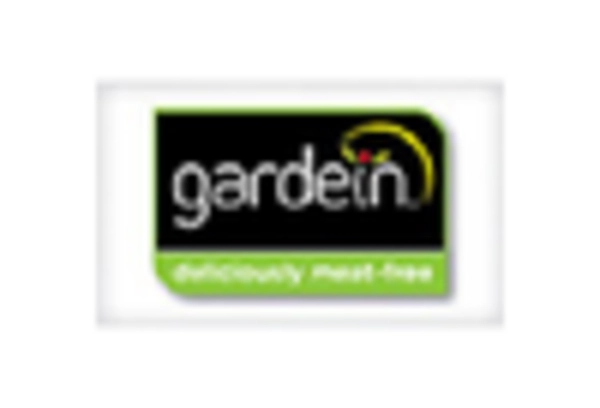Rising Health Consciousness
The Veggie Meals Market is experiencing a notable surge in demand driven by an increasing awareness of health and wellness among consumers. As individuals become more conscious of their dietary choices, the preference for plant-based meals has intensified. Recent data indicates that nearly 30% of consumers are actively seeking vegetarian or vegan options, reflecting a shift towards healthier eating habits. This trend is further supported by the growing body of research linking plant-based diets to reduced risks of chronic diseases. Consequently, the Veggie Meals Market is poised for growth as more consumers prioritize nutrition and health in their meal choices.
Environmental Sustainability
Concerns regarding environmental sustainability are significantly influencing the Veggie Meals Market. As climate change becomes an increasingly pressing issue, consumers are gravitating towards plant-based diets as a means to reduce their carbon footprint. Studies suggest that plant-based meals typically require fewer resources and generate lower greenhouse gas emissions compared to meat-based diets. This shift is evident in the rising number of brands that emphasize sustainable sourcing and eco-friendly practices. The Veggie Meals Market is likely to benefit from this trend, as consumers align their purchasing decisions with their values regarding environmental stewardship.
Innovative Product Offerings
The Veggie Meals Market is witnessing a wave of innovative product offerings that cater to diverse consumer preferences. Manufacturers are increasingly introducing a variety of veggie meal options, including ready-to-eat meals, frozen products, and meal kits. This diversification is essential in attracting a broader audience, including flexitarians and those seeking convenient meal solutions. Recent market analysis indicates that the frozen veggie meal segment has grown by approximately 15% in the past year, highlighting the demand for quick and nutritious meal options. As innovation continues to drive the industry, the Veggie Meals Market is likely to expand further.
Convenience and On-the-Go Options
The fast-paced lifestyle of modern consumers is driving the demand for convenience in the Veggie Meals Market. As individuals seek quick and easy meal solutions, the popularity of on-the-go veggie meal options is rising. Ready-to-eat salads, snackable veggie packs, and meal replacement bars are becoming increasingly prevalent. Recent surveys indicate that nearly 40% of consumers prioritize convenience when selecting meals, which is reshaping product offerings in the industry. As brands adapt to this demand for convenience, the Veggie Meals Market is likely to see continued growth, catering to the needs of busy consumers.
Culinary Trends and Global Flavors
The Veggie Meals Market is being shaped by evolving culinary trends that embrace global flavors and diverse cuisines. Consumers are increasingly adventurous in their food choices, seeking out unique and authentic plant-based dishes from various cultures. This trend is reflected in the rising popularity of international veggie meal options, such as Indian curries, Mediterranean mezze, and Asian stir-fries. Market data suggests that the demand for ethnic veggie meals has increased by over 20% in recent years. As culinary exploration continues to influence consumer preferences, the Veggie Meals Market is expected to thrive.


















Leave a Comment